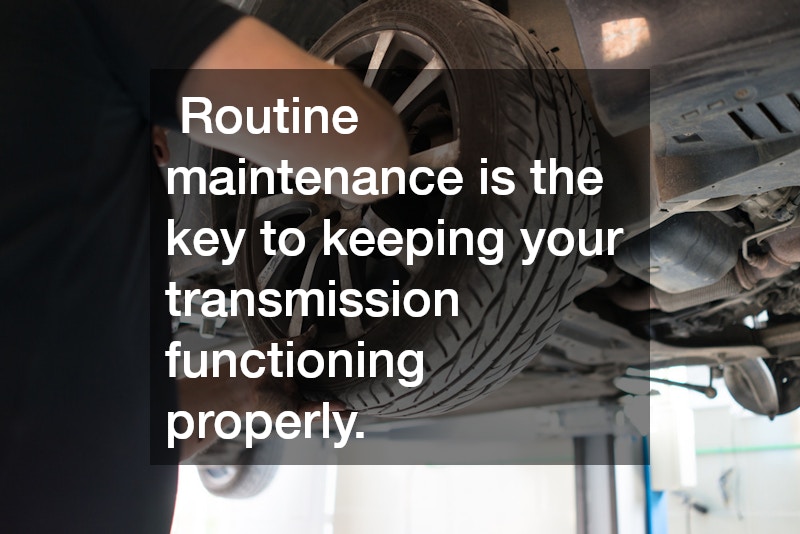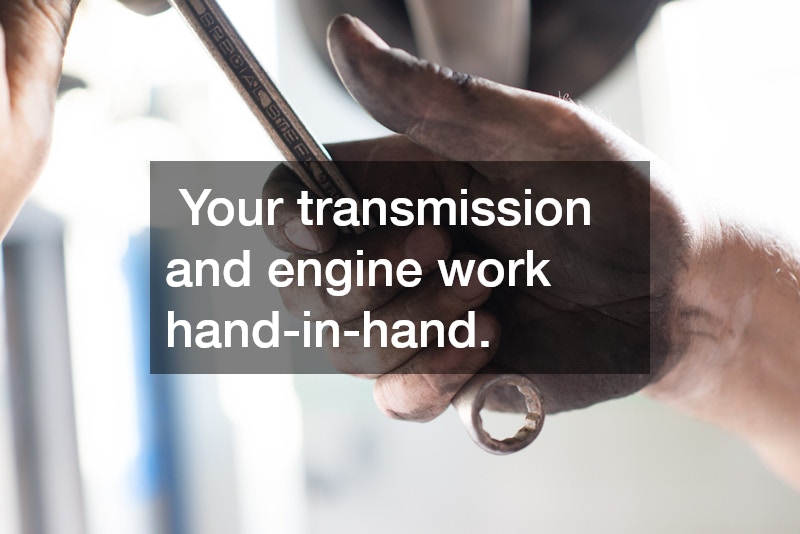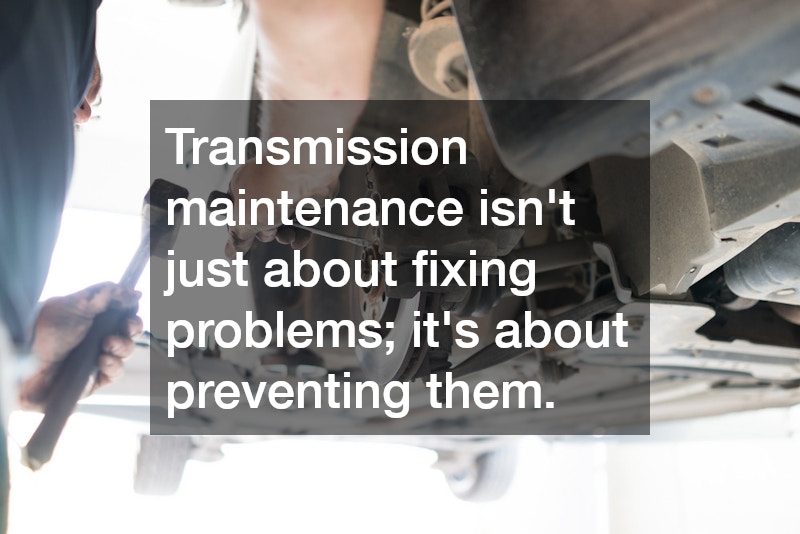Every vehicle owner knows that a car’s transmission plays a critical role in keeping it running smoothly. Without a properly functioning transmission, even the most powerful engine cannot deliver performance efficiently. Understanding how to care for, maintain, and identify issues with your transmission can prevent costly repairs and prolong your vehicle’s lifespan. This guide explores essential transmission repair tips every car owner should know, while also touching on topics such as maintenance schedules, costs, and how transmission issues can affect engine health.

For many drivers, repair expenses can be unexpected and overwhelming, which is where car engine financing options come in handy. Whether you visit an auto repair shop for a major service or just want to understand what’s happening under your hood, this guide provides valuable insights to keep you informed and confident in your car care decisions.
1. What Are the Common Signs of Transmission Problems?
Because the transmission operates as the bridge between the engine and drivetrain, even a minor malfunction can have noticeable effects on how your vehicle drives. Early signs can appear subtle at first, such as slight hesitation when changing gears or a faint whining noise while accelerating. Over time, these small issues can escalate into more severe problems like slipping gears, delayed engagement, or complete transmission failure. Some drivers also report vibrations or shuddering sensations while driving at consistent speeds, which often signal internal wear or low fluid pressure.
Modern vehicles equipped with advanced sensors may trigger dashboard warning lights when transmission problems are detected, but not all issues are electronically monitored. That’s why routine inspections and test drives remain essential. Neglecting early symptoms can lead to increased friction, overheating, and fluid contamination, all of which accelerate wear on critical components. If you ever notice changes in performance, unusual smells, or leaking fluid, it’s best to visit a trusted auto repair shop immediately. Prompt attention from a professional can prevent a simple adjustment from turning into a complete transmission repair or replacement, saving you both time and money while keeping your vehicle performing at its best.
1.1 Unusual Noises and Grinding
One of the first red flags of transmission trouble is strange noises, such as grinding, whining, or humming. These sounds often indicate worn-out gears or low transmission fluid levels. If you hear grinding when shifting, it could also point to clutch issues, particularly in manual vehicles. Scheduling a quick check at your local auto repair shop can prevent the issue from worsening.
1.2 Delayed or Rough Shifting
When you shift gears, the transition should feel seamless. If you experience delays or a jerky motion during gear changes, your transmission may be slipping. This is often caused by low fluid, worn components, or software issues in newer vehicles that use electronic shifting systems. Left untreated, rough shifting can lead to severe damage requiring professional transmission repair.
1.3 Fluid Leaks and Unusual Odors
Transmission fluid acts as both a lubricant and a coolant. If you notice reddish fluid under your car, you likely leak. A burning odor inside the vehicle can also signal overheating or old fluid that needs replacing. Regular inspections can detect these issues before they become serious, saving you the expense of an emergency repair.
2. How Often Should a Transmission Be Serviced?
Routine maintenance is the key to keeping your transmission functioning properly. The frequency of service can vary depending on the make and model of your car, how often you drive, and your driving habits.

2.1 Manufacturer’s Recommendations
Most automakers suggest servicing your transmission every 30,000 to 60,000 miles. However, always refer to your owner’s manual for specific guidelines. Neglecting these intervals can lead to unnecessary wear and tear. Reputable mechanics who use advanced car shop management systems often keep digital records of your maintenance history, ensuring timely reminders and accurate service tracking.
2.2 Factors Affecting Service Frequency
Several factors determine how often your transmission needs attention. Frequent stop-and-go traffic, towing heavy loads, or driving in extreme temperatures can all accelerate fluid degradation. If you use your vehicle for commercial purposes such as used auto sales, transport, or vintage auto restoration projects, you may need more frequent inspections to ensure reliability under high-demand conditions.
2.3 Signs It’s Time for a Check-Up
If you notice slipping gears, delayed acceleration, or unexplained noises, don’t wait for a complete breakdown. Visit your preferred auto repair shop as soon as possible. Technicians often use advanced diagnostic software, similar to auto repair marketing software tools that track client services, to identify problems early. Prompt intervention helps you avoid more expensive repairs or replacements.
3. Can I Fix Transmission Issues Myself?
For many car owners, tackling small maintenance tasks can be both satisfying and cost-effective. Basic transmission care, such as checking and topping off transmission fluid, inspecting for leaks, and ensuring the right fluid type is used, can go a long way toward preventing bigger issues. Clean and properly filled transmission fluid helps keep gears lubricated, reduces heat buildup, and ensures smoother shifting. You can also pay attention to the color and consistency of the fluid—if it appears dark or has a burnt smell, it’s time for a change.
However, while routine checks are manageable at home, more complex issues should be handled by a professional technician. Transmission systems are intricate, involving delicate components that require precision and specialized tools to repair. Attempting to fix deeper mechanical problems without the proper expertise can cause more harm than good and might void your vehicle’s warranty. It’s always smart to consult a certified mechanic or visit a reputable auto repair shop for diagnostics before attempting repairs on your own. By recognizing your limits and knowing when professional help is needed, you can protect your vehicle’s performance, avoid unnecessary expenses, and keep your car running smoothly for years to come.
3.1 DIY Maintenance Tasks
Simple actions like checking fluid levels and color, cleaning the transmission filter, or inspecting for leaks can be handled by most car owners. Regularly monitoring these can prevent small problems from becoming major ones. DIY care is an affordable step that pairs well with car engine financing for more significant repairs when needed.
3.2 When to Consult a Professional
Attempting to repair internal transmission components without proper knowledge or tools can cause further damage. Complex issues, such as torque converter problems or valve body failures, should always be addressed by certified technicians at a reputable auto repair shop. These professionals often have access to specialized tools and training that the average car owner does not.
3.3 Tools and Resources for At-Home Repairs
If you prefer to handle minor tasks yourself, consider investing in a quality set of automotive tools and a service manual. Online resources, supported by auto repair marketing software and video tutorials, can also guide you through safe and effective maintenance. However, always keep in mind that prevention is easier—and cheaper—than correction.
4. How Do Transmission Issues Affect the Car Engine?
Your transmission and engine work hand-in-hand. When one struggles, the other often suffers. Understanding how transmission issues impact engine performance can help you prevent costly complications.
4.1 Engine Performance and Efficiency
When the transmission fails to shift gears properly, your engine has to work harder to maintain speed, reducing fuel efficiency. Over time, this can cause increased wear on critical engine parts. Drivers who utilize car engine financing to handle major repairs should understand that neglecting transmission care can indirectly increase engine-related expenses.
4.2 Potential Engine Damages
Prolonged strain caused by faulty gear shifting can damage the drivetrain, clutch systems, and even lead to overheating. Such damage often requires both transmission repair and brake repair services, especially when the issue affects braking performance. If left unresolved, these complications could even result in road accidents—something car accident lawyers often see when mechanical failures are involved.
4.3 Preventive Measures to Protect the Engine
Regular inspections and fluid checks are essential. Keeping the transmission fluid clean and at the right level prevents metal-on-metal contact and heat buildup. For those storing seasonal vehicles, such as RVs, proper RV storage with controlled temperatures ensures your fluids remain stable and components don’t corrode over time.
5. What Are the Costs Associated With Transmission Repair?
Repairing or replacing a transmission can be one of the more expensive automotive services. Understanding what goes into the cost can help you plan and make informed financial decisions.

5.1 Typical Repair Costs Breakdown
Minor fixes, such as replacing seals or sensors, may cost a few hundred dollars, while complete rebuilds or replacements can run into the thousands. If you’re working with a specialized auto repair shop that handles vintage auto restoration or high-performance vehicles, prices can be even higher due to the labor and parts required.
5.2 Factors Influencing Repair Prices
The type of vehicle, transmission design, and severity of damage all influence repair costs. Automatic transmissions are generally more complex and expensive to service than manuals. Geographic location, labor rates, and whether your car is covered by warranty or car engine financing can also affect total expenses.
5.3 Budgeting and Financing Options
To manage costs effectively, many repair centers offer payment plans or financing programs. Exploring car engine financing options can make major repairs more affordable, allowing you to pay over time rather than in one lump sum. A good car shop management system ensures transparent billing and keeps detailed records of every service performed, providing peace of mind for both the mechanic and the car owner.
6. How Can I Extend the Life of My Transmission?
Proper maintenance and mindful driving habits go a long way in ensuring the longevity of your transmission. By following best practices and investing in preventive care, you can avoid premature failures and save on future repair bills.
6.1 Regular Maintenance Practices
Schedule routine inspections and fluid changes as recommended by your manufacturer. Consider occasional professional cleanings or flushes to remove buildup that could hinder performance. Proper maintenance is the cornerstone of reliability, whether for a daily driver or a vehicle undergoing vintage auto restoration.
6.2 Driving Habits That Preserve Transmissions
Avoid aggressive driving, sudden acceleration, and heavy towing beyond your vehicle’s capacity. These habits can strain your transmission and lead to overheating. For businesses engaged in used auto sales, educating customers on these habits can reduce warranty claims and improve overall satisfaction.
6.3 Investing in Quality Parts and Fluids
Not all transmission fluids are created equal. Always use manufacturer-approved products and high-quality components. Using subpar materials can cause damage over time, resulting in expensive transmission repair or brake repair needs. Many reputable service centers employ digital tracking systems like car shop management systems to ensure proper fluid and part specifications are used consistently.
In addition to maintenance, temperature control is vital. Vehicles stored in areas that undergo calibration or climate testing—such as those requiring environmental chamber calibration—are less likely to suffer from extreme wear due to stable environmental conditions. Similarly, ensuring your rv storage area maintains a consistent temperature can preserve transmission and engine health.
Being informed and proactive about transmission care pays off in the long run. Routine inspections, timely fluid changes, and attention to driving habits all help prevent unexpected breakdowns and extend your vehicle’s lifespan. Whether you’re managing a fleet through a car shop management system, restoring classics with vintage auto restoration, or running an auto repair shop with advanced auto repair marketing software, understanding how transmissions work benefits everyone involved in automotive maintenance.
When major repairs become unavoidable, exploring car engine financing can ease the financial burden and keep you on the road with confidence. Many drivers face unexpected transmission issues that can cost thousands of dollars to fix, especially if replacement parts or a full rebuild are needed. Car engine financing options—offered by dealerships, auto repair shops, or third-party lenders—allow you to spread out repair costs into manageable monthly payments instead of paying everything up front. This approach helps ensure your vehicle gets the care it needs without straining your budget or delaying essential repairs.
In addition to financing, some auto repair shops also provide service plans or warranties that cover future transmission maintenance. These programs can be a smart investment for car owners who want predictable costs and long-term peace of mind. Pairing financing with consistent maintenance—such as routine fluid checks, timely filter replacements, and regular diagnostic scans—will help you catch small problems before they escalate into major ones.
Remember—transmission maintenance isn’t just about fixing problems; it’s about preventing them. With consistent care, early detection, and professional support, your car will continue performing at its best for years to come. By taking a proactive approach and exploring smart financing solutions, you safeguard both your vehicle and your financial stability.

